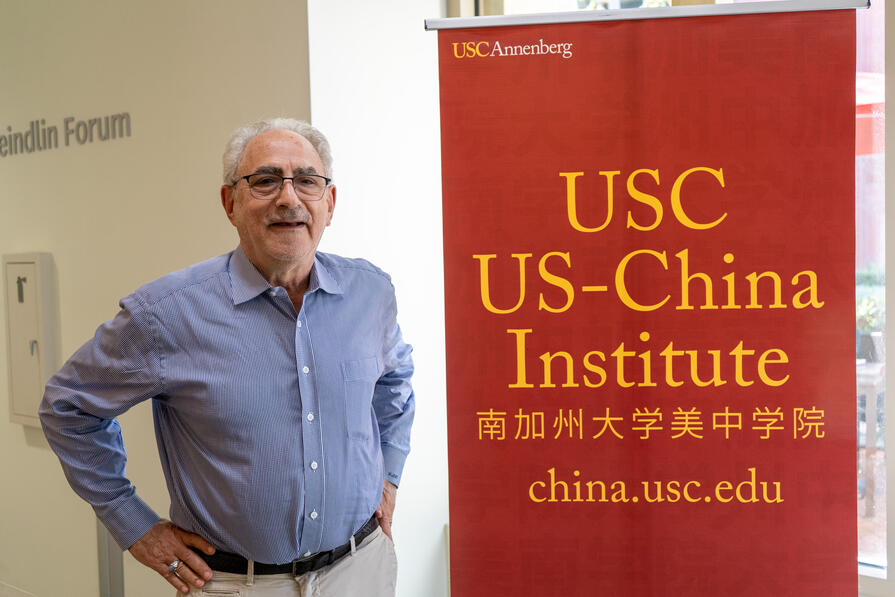by Clayton Dube
USC US-China Institute
The toughest, yet most important stories for journalists to tell are those about policies and trends that will affect the greatest number of people over the longest stretches of time. Broad social change, even when (or perhaps especially when) initiated by government fiat can be daunting to chronicle and analyse. Readers are drawn to the fresh story, even if it is more titillating than substantive. Reporters, naturally, want to avoid being part of a pack or even repeating themselves by focusing on a phenomenon whose principal importance is its constancy and spreading impact. Even the best editors soon ask, “haven’t you done this already?”
But it is precisely those durable and far-reaching trends that most need attention.
Examples from the People’s Republic’s first sixty years make this clear. The big political movements and resulting economic shifts produced headlines at home and abroad. These include collectivization in the 1950s, the Cultural Revolution, and the Deng-era economic reforms that began in the late 1970s. Below, though, are four changes that have done much to shape the size and composition of China’s population, and will influence government and business decisions for decades to come. None went unnoticed when first announced, but too few analysts understood for years afterward the crucial impact these new policies and practices would have.
The first three of these actions date from the 1950s:
a) the reduction in infant mortality;
b) the decision to reject population growth controls; and
c) the institutionalisation of discrimination toward the rural population.
Through energetic education and public health efforts, China was able to cut its infant mortality rate from 25-30% in 1950 to perhaps 15% by 1957. This was a great achievement. It also ensured that the country’s population growth rate would accelerate dramatically. This acceleration horrified Ma Yinchu, an economist and president of Peking University, causing him to call in 1957 for measures to stem it. Influenced by Chinese tradition and Soviet orthodoxy which associated population growth with good governance and increased power, Mao Zedong and other leaders dismissed Ma’s calculation that China’s growth was unsustainable, arguing that “every stomach comes with two hands” (to work).
At the same time the regime denied that population growth was a problem, it acted to restrict the growth of cities by constraining mobility. In 1958, the government imposed a household registration (hukou 户口) system. With few exceptions, people were tied to where they were born, denying them the chance to move in search of better opportunities for their families. Fifty-one years later, the hukou system has been partially dismantled, but it still serves as a barrier to fully equity.
In 1978, the fourth big change began. This coincided with the start of the “open door policy” and was intended to reduce the resource strain imposed by China’s expanding population. China’s population had nearly doubled since 1949, overtaxing the capacity of the economy to absorb labor and meet even basic consumption needs. Implementation of the “one child family policy” was widely reported. What received less attention was that China’s birth rate had already declined dramatically, from 3.8% in 1965 to 1.8% by 1978. This was due in part to the success of a government campaign beginning in 1973 for people to voluntarily marry later and have fewer children. Why then, launch such a massive and intrusive social engineering project?
The short answer , is that Deng and others were convinced by Song Jian, a distinguished missile scientist, that the population explosion constituted a national security crisis and required drastic and immediate action (see Susan Greenhalgh, Just One Child: Science and Policy in Deng's China, 2008). As is now widely known, coercive measures were sometimes used. China’s birth rate now hovers around 1.4%. Critics of the program argue that increasing urbanization and education would have yielded a similar drop – while Chinese authorities insist that without the program, the country would have an additional 200 million people. The births that did occur contributed to a large gender imbalance, thanks to traditional biases in favor of boys. Moreover, the drop in the birth rate, combined with longer life expectancies, gives China the most rapidly ageing society in the developing world. By 2030, China’s over-65 population will number more than 230 million and will make up twice as large a share of the population, 16%, as they do today (see charts at.
In part because of China’s much greater openness today, journalists have documented both the gender gap and the graying of the population. They have also pointed to many other challenges confronting China today. These include three intertwined and widely recognized needs:
a) restructuring the economy so that growth comes more from consumption than from investment,
b) narrowing the wide gap between rich and poor, and
c) halting - and hopefully reversing - the massive degradation of the Chinese environment.
It can be hard to pinpoint where transformational change begins. Thirty years ago, frustrated by stagnating incomes and collectivized production norms, Chinese farmers began unauthorized experiments in household contract farming. These farm practices were eventually adopted for implementation nationwide, ending collectivized agriculture and fundamentally changing China. It may well be that in different parts of the vast Chinese landmass, nascent entrepreneurs are creating jobs and providing services to meet tomorrow’s needs. If their efforts can lift rural wages and shift investment away from capital and carbon-intensive industries to more labor-intensive and environmentally-friendly production, this will foster socio-economic change - even without the headlines.
USC/Economist Symposium on "Life after 60: What's next for the PRC?"



